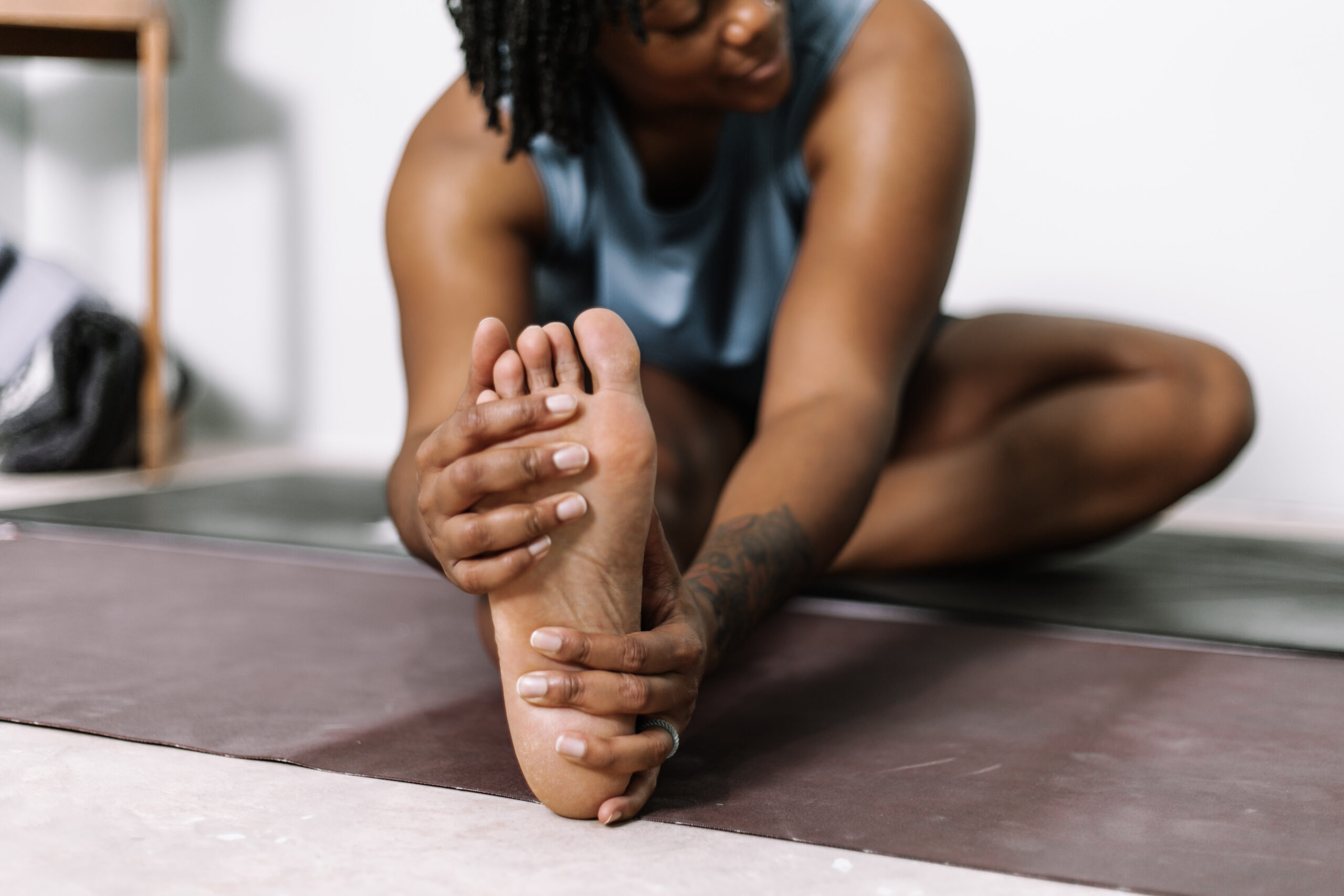“When thinking about anatomy remember…feelings aren’t facts.”
I heard this quote from Rick Richey, faculty instructor for the National Academy of Sports Medicine (NASM), at a fitness conference almost 10 years ago. I think of this quote any time I’m feeling pain or discomfort and I wonder what other areas of my body might be the culprit. This quote means that just because something is feeling tight, sore, achy and painful doesn’t mean that the site of the discomfort is to blame.
Often, there is a spot on your body that seems far from the site of pain but that has everything to do with the pain.
One example of feelings not being facts is how prolonged periods of sitting impact your feet. Sitting for long periods can cause poor circulation, weakened muscles and stiffness that can present in the following conditions:
- Soreness in the soles of your feet
- Ankle and foot swelling
- Plantar fascia pain
- Heel pain
- Ankle stiffness
- Cramping and stiffness in your toes
How does sitting impact your feet?
The effects of prolonged sitting are well-known to be a health hazard but many of us don’t realize how much sitting impacts our feet. When you think of how your body is positioned while you’re sitting: flexed hips, bent knees, toes pointing down, you can start to see the connection. Our bodies were meant to walk, stand, run and stretch and sitting for too long can weaken the muscles, tendons, joints and fascia that support those movements.
Your heart, with a little help from gravity, helps deliver fresh blood down to your feet but when you sit, your blood isn’t pumped as strongly, which can cause swelling of your feet, ankles and toes.
According to the American Academy of Orthopedic Surgeons, plantar fasciitis is the most common cause of heel pain. It’s also the most common compliant I hear from fellow work from home business owners; I struggled with it for many years before learning more about the anatomy of the hip and spine and doing daily stretches (not only for my feet!) that help relieve foot and heel pain.
The stretches in this video have helped ease my foot pain.
What causes plantar fasciitis?
Plantar fasciitis is caused by inflammation of the ligament that covers the bottom of the foot and attaches to the heel bone. The other side of that heel bone attaches to the Achilles tendon and calf muscles. The calf muscles are shortened, and the Achilles tendon is tightened when the knee is bent, and the toes are pointed down – the position you’re in when you’re seated. This is why plantar fascia pain often intensifies when you stand up after you’ve been sitting and also why that bruised pain comes and goes without ever feeling like it’ll truly go away.
If you’ve struggled with this pain, you may have tried the typical remedies: rolling your foot over a frozen water bottle, wearing an air cast or a night splint, but the only true remedy is to restore muscle length in the calves by stretching them and limiting the time you spend sitting.
As always, consult a physician for any pain that won’t go away or that worsens over time.
How can you counteract the impact of sitting?
To help counteract the negative effects of prolonged sitting, try the following activities:
- Stand up every hour: shake out your legs, stretch your calves
- Shake, bounce and wiggle your arms and legs to improve circulation
- If you can’t take a break to stand, march in place while sitting to get the blood pumping
- Stretch your hip flexors
- Use a therapy ball or foam roller to relieve tension in your feet
- Use toe separators to help realign your toes, especially if you wear shoes while sitting
- Stretch and strengthen your low back muscles: this area connects your upper to your lower body and can hold a lot of tension from prolonged sitting
- Invest in a standing or adjustable height desk. I recommend FlexiSpot adjustable desks.
Exercise and foot pain – a helpful tip
Lastly, if you do cardio after work be sure to stand and extend your hips as much possible. Cycling is a great, but it keeps the hip in the same flexed position it’s in while sitting. Try walking instead, which extends the hips. For strength training, perform as many exercises standing as possible – standing shoulder press versus shoulder press machine, for example. Add hip opening and strengthening exercises to your warmups and cool downs, too.
Counteract the effects of sitting by scheduling your next movement break – try my Youtube Video. Your feet will thank you!


Geesh, I felt so seen. I have a great deal of those symptoms. I recently started stretching througout the day. I have noticed a little difference in my hip area. Still tight but not as stiff. I will be more thab happy to try the exercises in the video. 😊
Hi, Rainey! You’re not alone and I’m really glad you found this post helpful 🙂 The exercises in the video can be practiced daily – give them a try and let me know what you think.